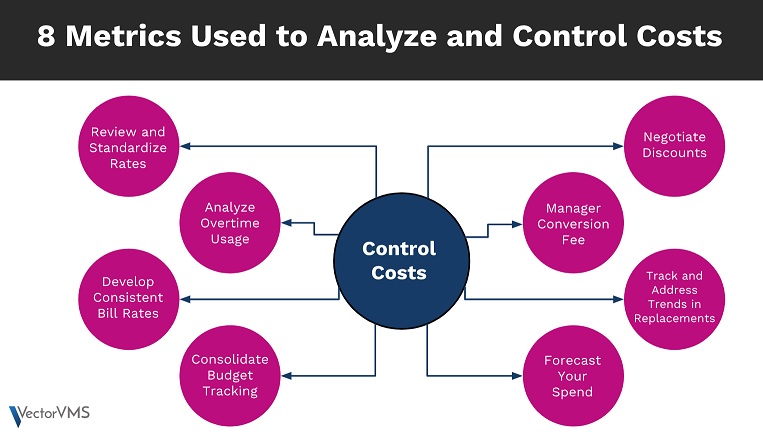Cindy Chunn brings over 20 years’ experience to her role as Senior Shared Services Manager with VectorVMS, previously a division of PeopleFluent. As part of the VectorVMS Implementation Services team, Cindy serves as a strategic partner, providing consulting and contingent workforce program management support, as well as implementation support for our VMS technology.
For years, traditional employment and work environments controlled business as usual, but today’s labor market has been redefined by the rise of the gig economy—almost half of workers nationwide.
The contingent workforce, as part of the gig economy, is a labor pool of consultants, independent contractors and freelancers, and other forms of temporary professionals hired by an organization.
Contingent workers aren’t directly employed by a client—they’re sourced primarily through a vendor or supplier. While workers perform tasks onsite for clients, they remain an employee of suppliers or vendors.
What’s the Cost of Contingent Growth?
Cost- and budget-related challenges associated with managing your contingent workforce include
- Controlling maverick spend
- Forecasting budgets
- Gaining spend visibility.
A vendor management system (VMS) can help measure contingent labor program costs, and to gain even more control, leaders and managers must know the right metrics to measure in order to make cost-conscious, data-driven decisions.

Gain Control over Contingent Workforce Program Spend
We sat down with contingent workforce expert Cindy Chunn to learn a few finance issues that concern vendor management system users, with these 8 critical cost metrics in mind.
Budgets for Contingent Workforce Management
Q1: You discussed budgeting in a vendor management system (VMS). If a client doesn’t have a defined budget, what value could they gain from setting up an ad hoc budget?
Cindy Chunn: In one form or another, your team will be budgeting for requisitions. While you might not have a preconfigured budget for your entire contingent workforce program, creating a budget on an ad hoc basis brings cost value in areas including
- Future budget preparation
- Market benchmarking
- Standardized vendor rates
- Contingent labor spend and cost trends.
Your team is likely to need a universal budget—one that you can modify for specific needs—in the future. That’s a task best-suited for your VMS. It’s pretty safe to say that if your team isn’t using the VMS budget functionality, now is the time to turn it on.
You’ve already determined contingent worker bill rates, plus individual contract periods, so why not accrue some vital data in the meantime? This will only improve your budget forecasting.
Q2: What insight can tracking contingent workforce spend provide?
CC: Let’s say you have a contingent worker performing assigned tasks within your department. With a preset budget for that engagement, you know the exact total you’re accountable to pay, the hourly bill rate, and the duration of the assignment.
That vital information enables you to begin tracking the burn of that contract’s budget the moment you approve their first timesheet.
where, how, and why of your contingent labor spend.
Using the burn reports generated from your VMS, your contingent labor program managers can analyze the data to spot cost trends and develop consistent bill rates.
More important, creating an accurate budget based on the market standard helps you source the best contingent talent, at the right time, and at the most cost-effective rate, which is especially important in areas where specialized skills are a hot commodity.
The Value of Master Services Agreements
Q1: Why should a client have a master services agreement (MSA) with each vendor?
CC: An MSA outlines the parameters and defines specific terms of a contract between two parties. In vendor management, this is absolutely where your partnerships should begin.
The binding agreements between your team and partners will vary vendor-by-vendor.
Verbal and undefined client-vendor agreements could increase risk, such as overpaying for contingent labor. A well-written MSA covers all your needs, from pricing to compliance requirements.
Q2: What are the essential elements to any MSA?
CC: Whereas a service level agreement (SLA) defines precise elements of a contract, such as performance metrics and quality and volume of work, a master services agreement specifies less tangible contract terms.
The MSA between you and your vendor will depend on each party’s needs, responsibilities, and expectations. At minimum, a reputable agreement should include
- Pre-employment requirements
- Key contacts
- Time-to-fill rates
- Service locations
- Compliance items
- Quality of candidates
- Cost-containment measures (e.g., agreed rates, mark-ups by location, and/or labor categories).
Hand-picked for you: How to Measure and Improve Quality across Your Contingent Labor Program
Vendor Selection Strategies
Q1: As part of a procurement department’s long-term sourcing strategy, how do contingent workforce managers determine the best and optimal number of vendors?
In a new program, you may decide add your current vendors into your VMS. As that data accrues, you can begin justifying the service, cost, and quality of the partnership. Once you identify top vendors, align them with the number of vendors you need to support your program and your budget.
The biggest obstacles I’ve seen teams face when implementing a VMS is identifying current vendors and understanding reasons for the partnership—clearly demonstrating why adopting a VMS is key.
Vendors in Your System
Are you working with these vendors because a previous manager partnered with them for 20 years? Or do they source quality talent, provide excellent service, and follow compliance regulations?
justify their current vendors and associated costs.
With the valuable financial data that vendor management software can generate, clients are able to assess their contracted vendors and make educated, cost-effective vendor selections in the future.
Vendors That You’re Vetting
Qualified contingent workers who also align with your requisition and suit your team’s culture aren’t around every corner.
For example, one market location could be rich in executive admins, but in that same market, finding and sourcing specialty skilled labor requires more time and effort. With data from your VMS technology, you can measure trends in vendors’ time-to-fill rates and performance level—even the quality and skill level of workers they supply across labor categories.
Q2: What value can clients expect from leveraging scale/requirements to obtain discounts and set menu pricing?
Data within your VMS enables extensive visibility of locations where talent is scarce or plentiful, and gives deeper insight into vendor participation.
This level of intelligence about the strengths, weaknesses, and qualifications of your vendors is necessary to make assignments based on
- Skill types
- Service areas
- Job categories.
Benchmark your data with labor market information from the Department of Labor (DOL) and state agency websites to verify rates and standard industry expectations.
Rewards for Quality Vendors
Q1: Are there any advantages to rewarding top-performing vendors?
CC: The success of your contingent labor program and business is tied directly to the quality of available candidates.
Because your staffing partners supply these candidates, regular vendor audits are necessary to gauge performance, worker quality, engagement, and compliance—all stipulations your MSA contains. Using these metrics to conduct risk assessments is equally as important as recognizing your dedicated vendors.
They are giving you your people. So reward and nurture those partners who demonstrate continued success by implementing a vendor recognition program.
You’ll see just how far genuine recognition can go when negotiating vendor discounts and sourcing labor during skills gaps and talent shortages.
Q2: What are some examples of rewarding vendor partners?
In the talent industry, location is key.
A vendor that services a location where skilled labor is hard to come by—and they have a knack for giving you the right talent just when you need it—reward them for it.
Assign them to that location. Or even make them your go-to supplier for certain labor categories. You’ll convey how much you value their effort. Your team can also recognize vendors by creating ranks and designating them as a top-tier supplier.
Throughout my previous experience as a vendor, sometimes the most sincere recognition came in the form of a thank you. Picking up the phone or sending a handwritten letter can mean more than anything else.

 Meet the Expert
Meet the Expert
Cindy Chunn – Senior Program Manager
Cindy Chunn was a seasoned Program Manager at VectorVMS. She served as a strategic partner to our clients, providing implementation support for our VMS technology and consultation services for contingent workforce program management. In her five years with VectorVMS, Cindy successfully led strategic business objectives, process improvements, and operational excellence for large and mid-market clients. Prior to VectorVMS, Cindy spent six years with Manpower as a regional director, overseeing multiple branches and large contingent workforce programs. She also served as a government solutions executive, blending public and private talent solutions for clients in the public sector.




